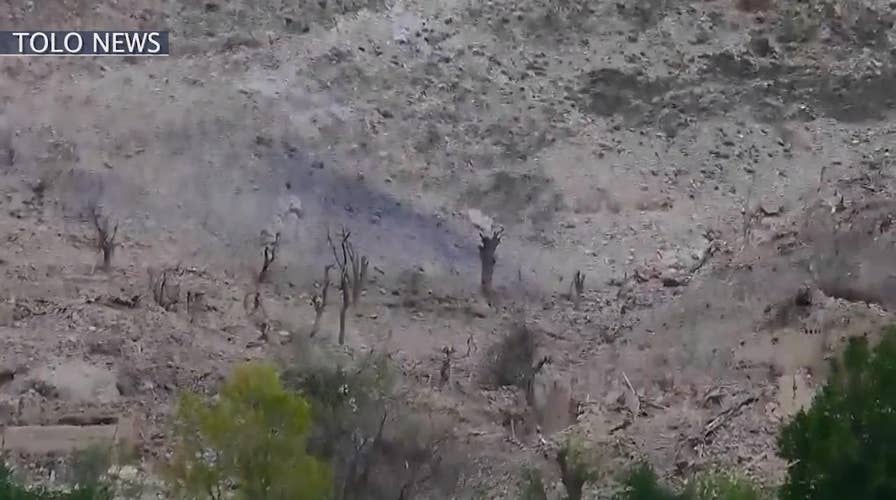Raw video: The MOAB aftermath in Afghanistan
A look at the aftermath from the detonation of the 'Mother of all Bombs', the largest non-nuclear munition the U.S military has ever used in combat
The “mother of all bombs” dropped on Islamic State militants in Afghanistan last month may not have been as effective as U.S. military officials have led on, analysts studying the airstrike said.
Alcis, an institute for geographical analysis, surveyed the targeted area in the Nangarhar province where the largest non-nuclear bomb ever used in combat was used, The Guardian reported Friday. The group determined that 38 buildings and 69 trees were destroyed in a near 500-foot radius, which contradicts statements made by residents who told local media the bomb damages houses up to two miles away.
The group added that the imagery shows no 1,000-foot crater and that much of the damage done appeared to be caused by ground fighting. The group said the number of militants the U.S. said it had killed in the airstrike may not be accurate. Officials said 94 ISIS militants were killed in the blast.
“I’m staggered by that,” Richard Brittan, the institute’s managing director, told The Guardian. “I simply don’t understand where they can get that number from.”
Brittan also questioned whether it was true no civilians had been killed. He said the strike happened less than a month before the harvest season and that most farms would have been near their crops.
“It’s the only place to be if you want to tend to those fields,” he said. “It is entirely possible that working-age male farmers could be counted as militants”.
Multiple Afghanistan military and government officials told Fox News last week that there simply was no other solution but to opt for the MOAB, as the vast array of planted landmines was making it next to impossible to effectively clear ISIS from the area without enduring severe soldier casualties.
"This bomb was a good thing. It destroyed everything. ISIS can't use that area anymore, so that is the success," said Maj. Abadullah Karimi, spokesperson for the 202nd Shamshad Police Corps, which is operating in those ISIS-infiltrated areas of Nangahar Province.
Capt. William Salvin, a U.S. military spokesman in Kabul, defended the use of the MOAB saying it was used for a “specific tactical purpose on the battlefield.”





















